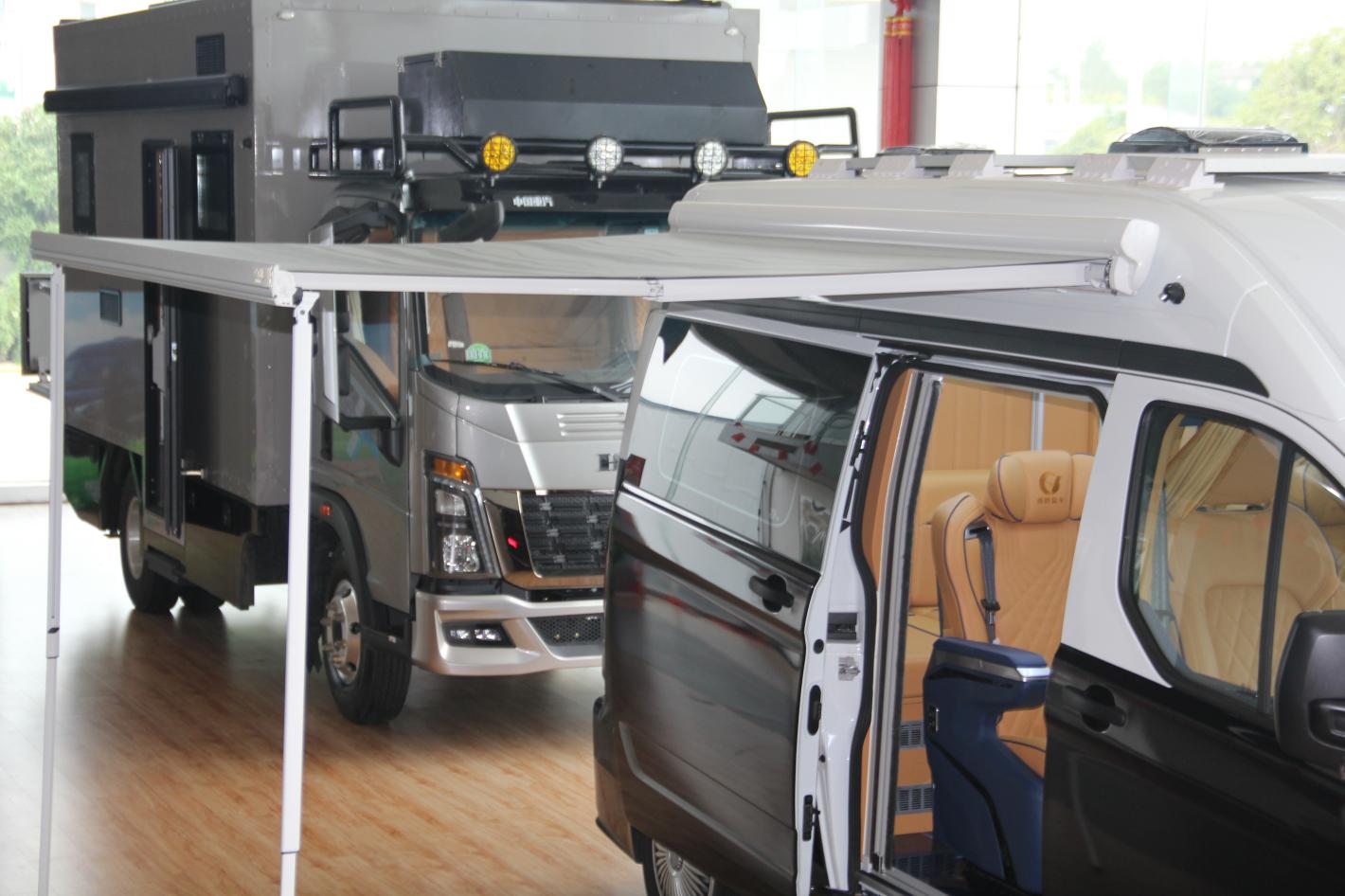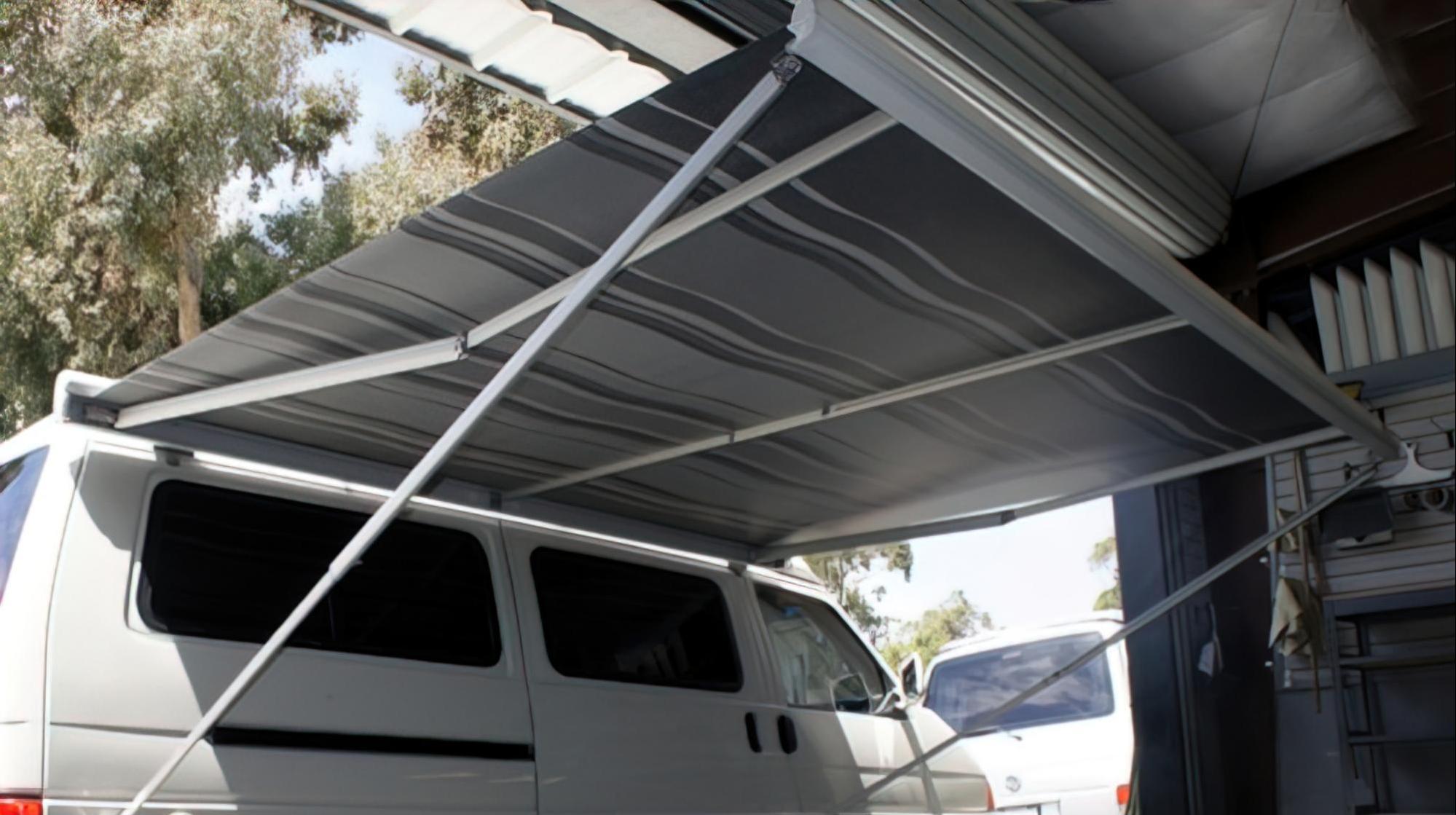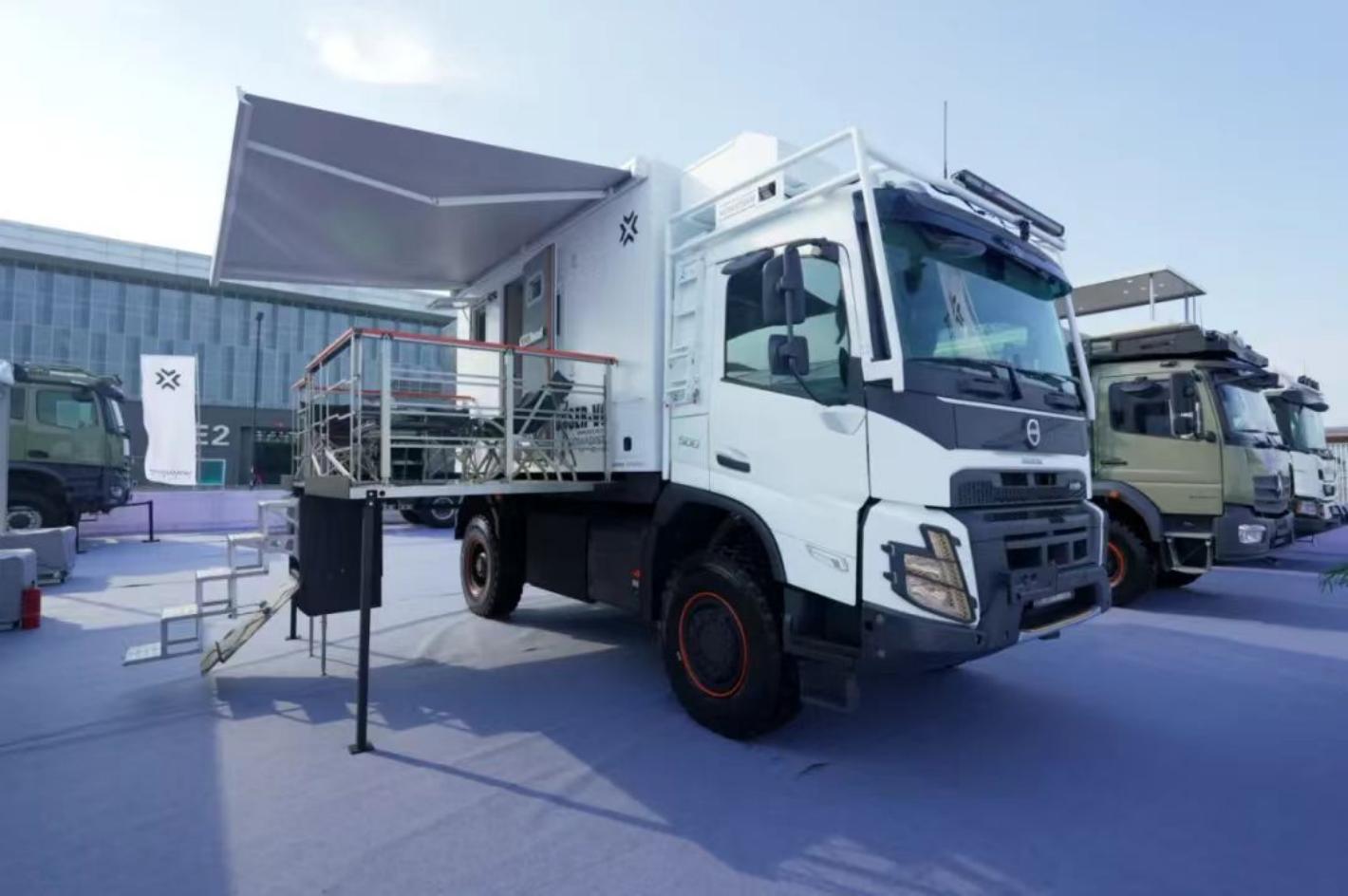Get in Touch with Us!
The Ultimate Guide to RV Awnings: Types, Benefits, and Maintenance Tips

Introduction
An RV awning is more than just an accessory; it's a game-changer for outdoor living. Whether you're camping in the mountains, relaxing at a beachside RV park, or hosting a backyard barbecue, an RV awning offers shade, comfort, and protection. Choosing the right awning, maintaining it properly, and knowing how to troubleshoot issues can significantly enhance your RV experience. This comprehensive guide explores everything you need to know about RV awnings, from types and materials to maintenance tips and installation instructions.
What is an RV Awning?
An RV awning is a retractable cover mounted on the side of your recreational vehicle, designed to provide shade and protection. These awnings come in various designs, from manual roll-out models to motorized versions with advanced features.
Key Features of an RV Awning
- Weather Resistance: Modern RV awnings are treated with UV-resistant coatings to withstand prolonged exposure to sunlight.
- Water Repellency: High-quality awnings repel moisture, reducing the risk of mold and mildew.
- Customizable Designs: RV awnings come in various colors, patterns, and sizes to complement your RV's aesthetic.
Common Materials Used in RV Awnings
- Vinyl: Durable, waterproof, and resistant to UV rays and mildew, making it ideal for humid climates.
- Acrylic: A breathable fabric that allows airflow while offering effective sun protection. It dries quickly, making it suitable for regions prone to frequent rain.
Both materials have unique benefits, making it crucial to select one that aligns with your travel habits and climate conditions.

Types of RV Awnings
Choosing the right RV awning depends on your budget, RV size, and outdoor needs. Here are the most common types:
1. Manual Awnings
Manual awnings are operated using a hand crank or pull-out mechanism. They are a popular choice for budget-conscious RV owners due to their simplicity and cost-effectiveness. These awnings are reliable and require minimal maintenance, making them ideal for casual travelers. While they lack automated features, manual awnings offer greater control in windy conditions since they can be adjusted precisely as needed.
2. Electric Awnings
Electric awnings are controlled by a switch or remote control, allowing for quick deployment and retraction. Many electric models come equipped with features like LED lighting, wind sensors, and adjustable pitch for better sun protection. These awnings are perfect for travelers seeking convenience and modern functionality. Although they require more maintenance than manual awnings, their ease of use makes them highly popular.
3. Retractable Awnings
Retractable awnings provide excellent flexibility. They can extend fully or partially, offering control over how much shade is created. These awnings are particularly useful in unpredictable weather conditions, as they can be quickly adjusted or retracted during sudden wind or rain. Some retractable awnings are available in both manual and motorized versions.
4. Fixed Awnings
Fixed awnings are permanent structures mounted directly onto your RV. They are sturdy and offer consistent shade without requiring deployment. While ideal for long-term RV setups, fixed awnings are less flexible and cannot be retracted during bad weather, which may result in increased wear over time.
5. Patio Awnings
Patio awnings are designed to create an extended outdoor living space. They often include side panels and privacy screens for added comfort and security. These spacious awnings are perfect for RV gatherings, social events, or families looking to expand their outdoor area.
Benefits of Using an RV Awning
RV awnings offer several advantages that improve your overall travel experience:
1. Protection from the Elements
Awnings shield you from harmful UV rays, rain showers, and light wind, creating a comfortable outdoor space for dining, socializing, or relaxing. This protection helps reduce sun exposure, minimizing the risk of sunburn and overheating.
2. Energy Efficiency
By blocking direct sunlight, an RV awning can reduce indoor temperatures, lowering your need for air conditioning and conserving energy. This efficiency not only saves power but also extends the lifespan of your RV's cooling system.
3. Expanded Living Space
An RV awning creates an outdoor extension of your RV, providing additional space for cooking, entertaining, or resting. This extra area makes outdoor dining, family games, or lounging more comfortable and enjoyable.
4. Enhanced Privacy
With the right accessories like sidewalls and privacy screens, awnings can create a secluded outdoor space in busy campgrounds. This privacy ensures you can enjoy personal time without interruption from neighboring campers.
How to Choose the Best RV Awning
To select the ideal RV awning, consider the following factors:
1. Material Durability
Vinyl is ideal for humid climates due to its mold and mildew resistance.
Acrylic is recommended for dry, sunny conditions thanks to its breathability and fast drying.
2. Size and Coverage
Measure your RV's sidewall length to ensure your awning fits properly.
Consider models that extend 8 to 12 feet for optimal shade.
3. Ease of Installation
Manual Awnings are simpler to install with minimal tools.
Motorized Awnings may require professional installation for wiring and mounting.
4. Wind and Weather Resistance
Some electric awnings have automatic wind sensors that retract the awning during strong gusts.
Consider reinforced arms for added stability.
5. Design and Aesthetics
Choose colors and patterns that complement your RV's style.
Lighter colors reflect heat better, while darker tones offer superior shade.

Installation Process
Follow these steps to install your RV awning effectively:
- Measure and Mark the designated area on your RV’s side for awning brackets.
- Mount the Brackets securely using bolts and adhesive sealant.
- Attach the Awning Rail to the brackets and secure it with screws.
- Install the Fabric by feeding it through the rail while ensuring even tension.
- Test the Mechanism by extending and retracting the awning to confirm stability.
For motorized awnings, consult the user manual for electrical wiring details or seek professional assistance if required.
Maintenance and Cleaning Tips
Proper maintenance ensures your RV awning remains functional and long-lasting:
- Clean Regularly: Use mild soap and warm water to remove dirt, bird droppings, and mildew.
- Inspect for Damage: Check for rips, tears, or loose brackets before and after each trip.
- Lubricate Moving Parts: Apply silicone spray to hinges and joints to prevent rust.
- Store Properly: Retract the awning when not in use to protect it from harsh weather.
Conclusion
Investing in a high-quality RV awning can elevate your outdoor adventures by providing shade, comfort, and additional living space. By choosing the right awning type, following proper installation steps, and maintaining it regularly, you'll enjoy years of worry-free outdoor relaxation. Whether you prefer a simple manual model or a feature-rich electric awning, understanding your options ensures you make an informed decision that enhances your RV lifestyle.
Are you ready to take your RV camping experience to the next level? At NATURE AWNING, we specialize in crafting premium RV awnings that combine durability, ease of use, and stylish design to create the perfect outdoor living space. Whether you're planning a weekend getaway or a long-term road trip, our awnings provide the shade and comfort you need to enjoy every moment.

.png)